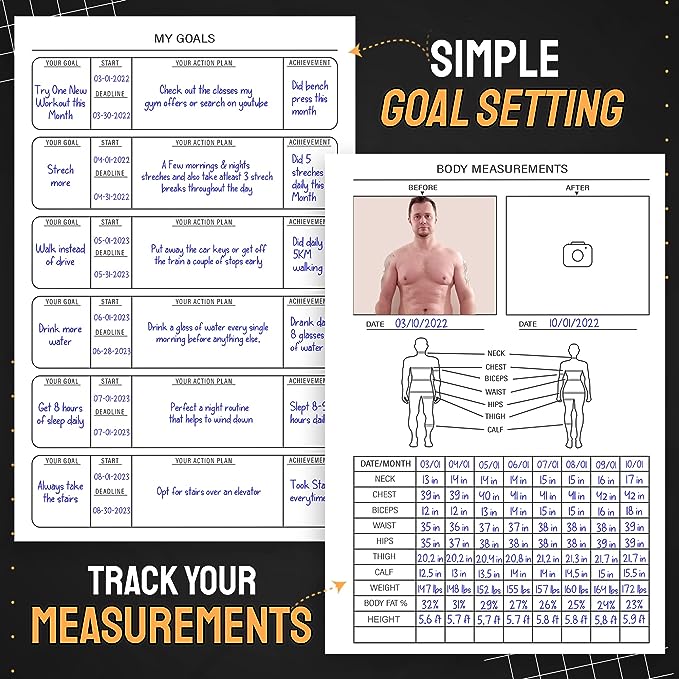Creating a personalized workout plan can be a game-changer for your fitness journey. Whether your goal is to lose weight, gain muscle, or improve endurance, a well-structured workout plan tailored to your needs is essential. This guide will walk you through the steps on How To Create A Workout Plan that works for you.

Understanding Your Fitness Goals for How To Create A Workout Plan
The first step in How To Create A Workout Plan is to define your fitness goals. Are you aiming to lose weight, build muscle, increase endurance, or improve overall fitness? Your goals will shape the type of exercises you incorporate into your routine.
- Weight Loss: Focus on a combination of cardio and strength training to burn calories and build muscle.
- Muscle Gain: Emphasize strength training exercises with progressive overload to increase muscle mass.
- Endurance: Incorporate cardio exercises that enhance stamina and cardiovascular health.
- Overall Fitness: A balanced mix of cardio, strength, and flexibility exercises to improve general health.
Assessing Your Current Fitness Level for How To Create A Workout Plan
Before diving into a new workout regimen, assess your current fitness level. This helps you set realistic goals and track your progress effectively.
- Cardio Fitness: Measure your endurance through activities like running or cycling.
- Strength: Test your ability to lift weights or perform bodyweight exercises like push-ups and squats.
- Flexibility: Evaluate your range of motion with stretching exercises.
Choosing the Right Types of Exercises for How To Create A Workout Plan
Selecting the right exercises is crucial for achieving your fitness goals. Here’s a breakdown of exercise types:
- Strength Training: Includes weightlifting, resistance band exercises, and bodyweight workouts like push-ups and squats.
- Cardio: Activities like running, cycling, swimming, and HIIT (High-Intensity Interval Training) improve cardiovascular health.
- Flexibility: Yoga, Pilates, and stretching exercises enhance flexibility and prevent injuries.
Structuring How To Create A Workout Plan Effectively
Creating a well-structured workout plan involves determining the frequency, duration, and intensity of your workouts.
- Frequency: Decide how many days a week you will work out. Beginners might start with 3-4 days, while advanced exercisers might aim for 5-6 days.
- Duration: Plan your workout sessions to last between 30-60 minutes, depending on your fitness level and goals.
- Intensity: Mix low, moderate, and high-intensity workouts to keep your routine challenging and effective.
Sample Workout Schedule
- Monday: Strength Training (Upper Body)
- Tuesday: Cardio (Running or Cycling)
- Wednesday: Strength Training (Lower Body)
- Thursday: Flexibility (Yoga or Stretching)
- Friday: Cardio (HIIT)
- Saturday: Strength Training (Full Body)
- Sunday: Rest or Light Activity (Walking or Stretching)
Incorporating Rest and Recovery into How To Create A Workout Plan
Rest and recovery are critical components of any workout plan. Your muscles need time to repair and grow, which helps prevent overtraining and injuries.
- Rest Days: Include at least one or two rest days per week.
- Active Recovery: Engage in low-intensity activities like walking or yoga on rest days to promote blood flow and recovery.
Tracking Progress and Making Adjustments to How To Create A Workout Plan
Monitoring your progress helps you stay motivated and make necessary adjustments to your workout plan.
- Track Workouts: Keep a journal or use a fitness app to log your workouts, noting the exercises, sets, reps, and weights used.
- Assess Progress: Regularly evaluate your fitness level through strength tests, cardio benchmarks, and body measurements.
- Adjust Plan: Modify your workout routine based on your progress and changing goals. Increase intensity, try new exercises, or shift your focus as needed.
Tips for Staying Motivated and Consistent in How To Create A Workout Plan
Staying motivated and consistent is key to achieving long-term fitness success. Here are some tips to keep you on track:
- Set Realistic Goals: Break down larger goals into smaller, achievable milestones.
- Find a Workout Buddy: Exercising with a friend can make workouts more enjoyable and keep you accountable.
- Mix It Up: Vary your workouts to prevent boredom and keep your body challenged.
- Reward Yourself: Celebrate your achievements with non-food rewards like new workout gear or a massage.
- Stay Positive: Focus on the progress you’re making rather than perfection. Every step forward is a victory.
Frequently Asked Questions About How To Create A Workout Plan
How often should I change my workout plan?
It’s generally a good idea to change your workout plan every 4-6 weeks to keep your body challenged and prevent plateaus.
Can I create a workout plan without equipment?
Yes, you can create an effective workout plan using bodyweight exercises such as push-ups, squats, lunges, and planks.
How important is diet in a workout plan?
Diet plays a crucial role in achieving fitness goals. A balanced diet provides the necessary nutrients for energy, muscle repair, and overall health.
Should I do cardio or strength training first?
It depends on your goals. If your primary goal is to build strength, do strength training first. If improving cardiovascular fitness is your goal, start with cardio.
How do I stay motivated on days I don’t feel like working out?
Remember your goals and why you started. Sometimes a short, low-intensity workout is better than skipping it entirely. Consistency is key.
By following these steps and staying committed, you’ll be well on your way to creating a workout plan that helps you reach your fitness goals. Stay motivated, stay consistent, and enjoy the journey to a healthier you!













